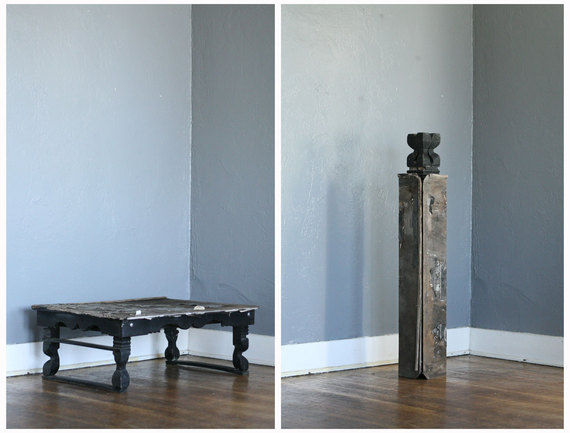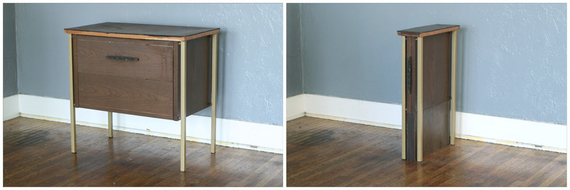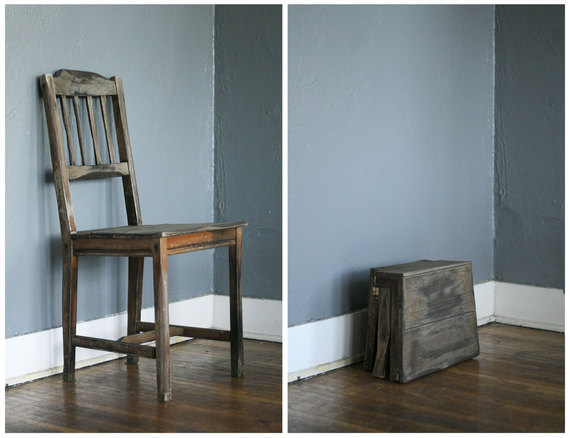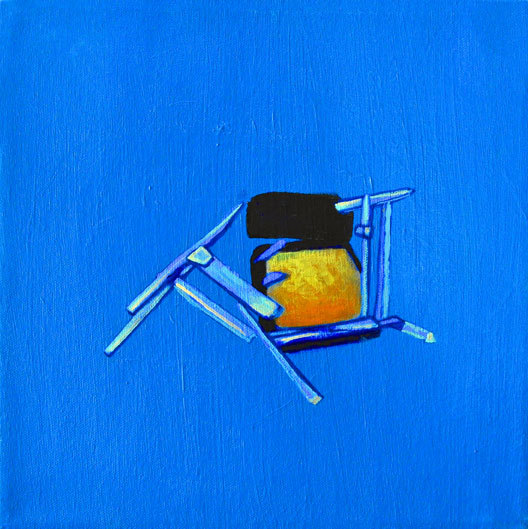Time is both incredibly reliable and very predictable. Our sense of its measure depends on what we happen to be aligning on either end. Byproducts of our sense of time are eternity and the temporary, both, like the idea of time itself, are just ways for us to try and understand what is happening around us.
A mountain range feels eternal, but in reality has not been around long in the sense of the earth's creation and likely will not be here at some point as the earth continues to churn, shift and fold like a grandmother wringing her hands in habit. The super continent Pangaea certainly would have felt like a landmass so great and impenetrable that its time was endless, but in reality even Pangaea was temporary and faced mortality through its breaking up. These life cycles or time frames of existence run harmoniously side-by-side: from insects that only live a few days, to humans, to the mountain ranges in a continuation, either in form or formlessness depending on their fate.
The Reductions series comes out of my interest in the end, represented in this case by the discarding of utilitarian objects that at some point were cherished or at least appreciated for their abilities while used daily. Their demise or changing of hands is a mystery in most instances, as many seem fully functional albeit visually worn. We can't know if they were replaced by a newer version of themselves, smaller, bigger, or if their owners had merely eliminated a need the pieces had previously addressed.
The needs of human beings fluctuate only slightly. A utilitarian object, furniture for this instance, has a tendency to move from one home to another to another, changing hands over the years while providing its original service as it visually and sometimes functionally deteriorates from use. In an urban setting, a set of chairs, an old bookshelf, a small table, often change hands from stranger to stranger as they are placed on the curb and retrieved by their new owner, which in this case would be myself. After I acquired them, I sit with them for a while, take portrait photographs of them, consider what should be and reduce them down to their material state.
I had realized that usable space in furniture was actually negative space or a void and by rearranging the negative space usability is directly affected. In a sense by moving the nothing, I could destroy everything needed and negate their intent in the process. This shifting of surface and space concurrently shifts its purpose and reason resulting in a something less than a shadow of its previous self.
Something's worth is solely dependent on desire and everything tactile has a value that varies depending on its desirability to us. In the most basic sense we desire things that assist us and that we enjoy visually, the weight of either of these parameters are also variable, but it's safe to say function and appearance are the two key components to possessions. When either of these attributes fades, the object in question moves towards its end.
This body of work addresses that transient nature of things, more specifically mortality and lifespans, not unlike the Dutch still life paintings of the 1600s and their subtle acknowledgement of death by displaying flowers and fruit destined to wilt, perish or be consumed days after they were posed for the paintings or more apparently a human skull sitting prominently in the foreground or the painting reminding us of our fate.
Do the objects find new life as a sculpture? Transcending from usable to adornment? Or are the sculptures merely memorials to their past purpose, a headstone of sorts, displaying the wear and scars of their duty and history, of the interaction with their previous owners and their lives? Will the sculptures find their way into collections where they will be kept secure for years, decades, generations, or will they be discarded after my death? If their timeline has been divided and extended what does this mean for usability and the relationship between need and desire. Does desire create a longer shelf life than need?
It is our responsibility to consider mortality as we inch or sometimes race towards it. The richness of experience would be dull or faded if subconsciously we were not aware that only a limited number of experiences are allotted to us. The contrast of pleasure and misery relies on our mortally and our knowing its simply a matter of time.
A number of the Reductions sculptures will be shown at downtown Los Angeles' 2A Gallery along side the chair portraits of long time friend and collaborator Joshua Petker. The exhibition opens on March 23rd 2014.
Joshua Pekter is a painter based in Los Angeles and is currently in the MFA program at CalArts. He work has been exhibited in San Francisco, Paris, London and most recently here in Los Angeles as part of the "About Face" exhibition curated by Daniel Weinberg at ACME in 2012.
2A Gallery is new gallery that occupies small space in a renovated office building on Main Street. I am excited to present the Reductions sculptures at 2A, considering it was once an intimate office and is now an alternative art space (which is a wonderful departure from the "white cube" of a traditional gallery setting).
The directors of the space, Calvin Phelps and Clay Russell also open up their home (which is just down the hall) inviting visitors to circulate between the two spaces.
j.frede / Joshua Petker : Support Systems
March 23, 2014 - April 27, 2014
Opening Reception: Sunday, March 23, 7-10 PM
2A Gallery
400 S. Main St. #2A
Los Angeles, CA 90013





